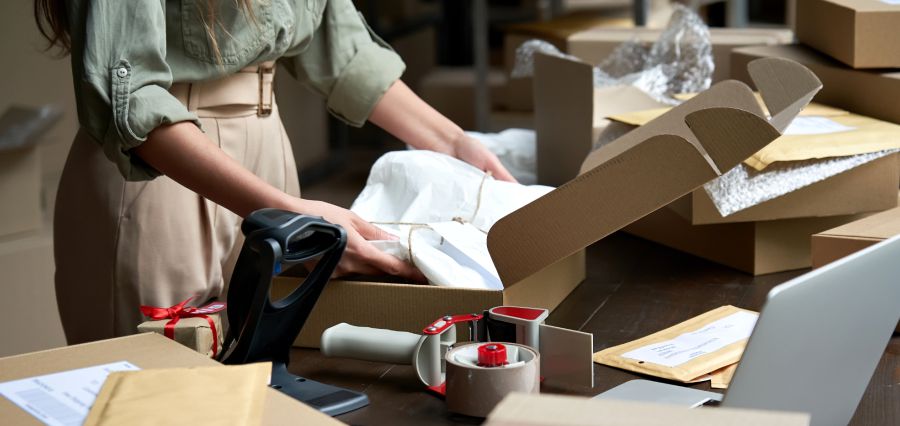More than 60,000 Moderna COVID vaccine doses were ruined by temperature control failure issues. When you’re running a business with ship temperature-sensitive cargo, mishaps like this are something you can’t afford.
In addition to consumer safety and efficacy concerns, these kinds of product disasters equal major financial losses in both spoiled inventory and your reputation. Here are 10 practical ways you can manage your risks when it comes to temperature-related disasters while shipping.
1. Evaluate Your Goods
Temperature-controlled shipping business does cost more. It’s more logistically challenging and does require special equipment. So, first evaluate if you need specialized temperature-controlled shipping. Or would regular shipping be alright as long as the shipment arrives within a certain timeframe, which would allow the temperature to stay relatively stable?
Is a temperature mishap a rare occurrence? Or have you been experiencing more shipment delays that have caused the cargo to exceed those temperature limits?
Temperature-controlled shipment premiums may be well worth your money.
2. Know Your Limits
Clearly define the temperature limit for your product. At what point does heat or cold impact the integrity of that item? Don’t guess. Test it, so you can develop clear standards for everyone, and everything involved in logistics for that item.
3. Know When the Product Exceeds That Limit
It was at the correct temperature when it left the warehouse and when it arrived at its destination. But how will you know if the freight maintained the correct temperature throughout its journey? Was the truck evenly cooled or did it have hot and cold spots that caused your product to fall out of range?
Consider using shipping safeguards like a temperature indicator, to identify if a certain crate went above or below the threshold you’ve set.
4. Adhere to a Strict Timeline
If you’re shipping temperature-sensitive freight, consider delivery time as a priority when you’re choosing a freight business or a particular shipping option. When looking to store and transport materials that are highly sensitive to temperature fluctuations, you should know that there are some great options. One of the best ones are most definitely specialty freezer containers that will allow you to lengthen the delivery time and keep the products fresh.
5. Work Around Peak Times
This can vary from business to business. So, talk to your transport business about the times of year, day, week when shipments take the longest. Just about any trustworthy shipping company will have access to these analytics and would be willing to help you plan around peak times to reduce time on the road.
6. Track Your Shipments
It’s critical to track your temperature-sensitive shipments via the tracking tools made available to you through your shipping business. You may have a trustworthy relationship with your shipper. But it never pays to fall down on this obligation. You’re the one who has everything to lose, not the transport business.
If one of your shipments does experience a delay, you need the opportunity to make plans to secure your inventory if it’s in danger of being compromised.
Tracking the shipment also ensures that the party who is receiving the shipment on the other end is ready to receive it at the time to reduce time it may be sitting on a dock.
7. Work with a Transport business that Specializes in your Type of Shipment
Obviously, shipping medication is different from shipping apples. Both require some temperature control but one much more so. Talk to your shipper about their experience with certain types of freight. And take advantage of special services they may offer for the freight type when they make sense.
8. Understand Your Packaging’s Contribution
Packaging you use can significantly impact how well a product maintains its temperature in a given environment. Don’t underestimate the value of good packaging. In some cases, investing in better packaging can reduce the need for other temperature-sensitive shipping costs and make shipping more cost-effective.
For example, EPS foam, reflective materials, and airtight seals can reduce exposure to heat and humidity.
9. Use the Right Shipping Containers
Wood, Plastic, Cardboard–you certainly have pros and cons when used as either packaging or shipping containers. Example, wood boxes let pressure escape from the packaging, which can reduce the risk of frozen food packages bursting within. But wood isn’t so great if you have a fragile item that could break by force.
Similarly, plastic can exclude moisture from your freight and it’s easily stackable. But it’s also less sustainable.
10. Evaluate the Whole Temperature Spectrum
Many temperature-controlled shipments are kept at freezing or near freezing temperatures because heat has been identified as the primary spoiler of the goods. But this can be problematic for some products like electronics or produce that could also get too cold. So don’t lose sight of the other end of the temperature spectrum when regulating the temperature of your product.
Bottom Line
Temperature-controlled shipments do require some additional logistical considerations. But very simple solutions can help you protect your shipment while also saving money.


















